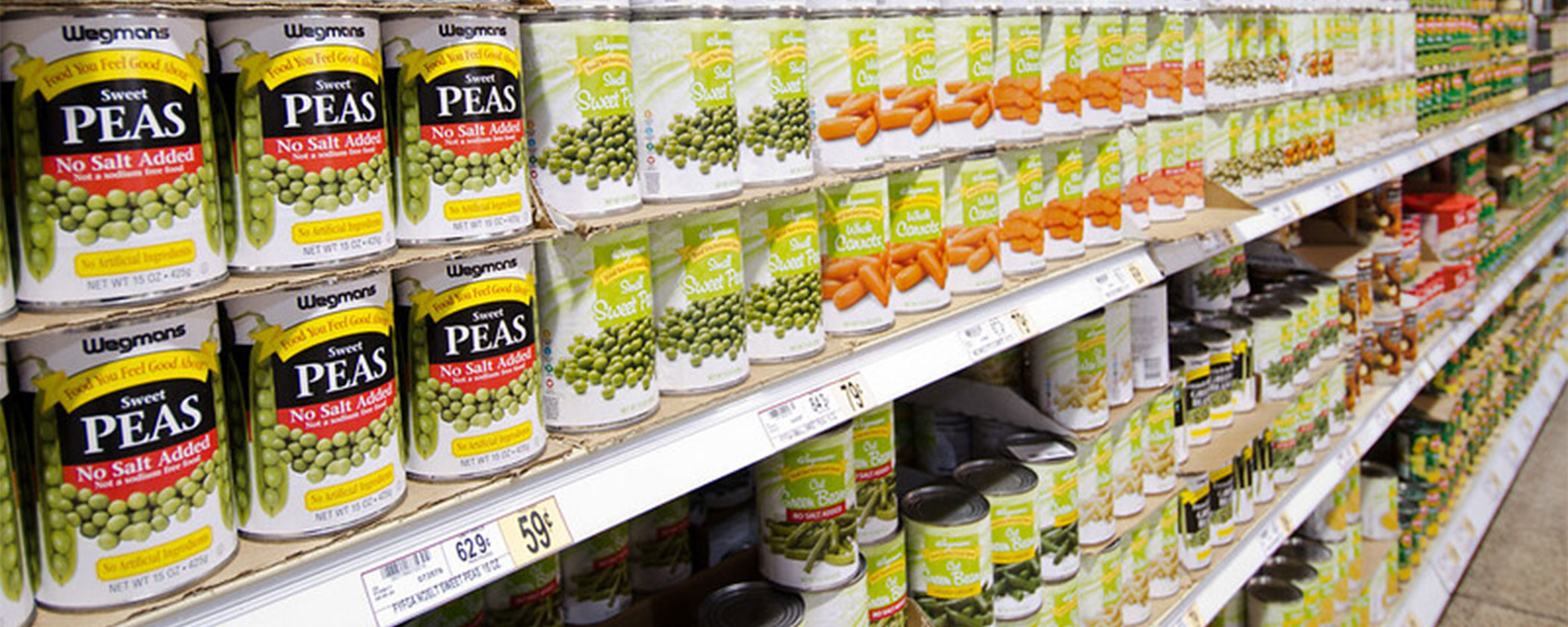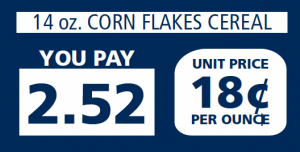
Cutting Costs on Food Using the Unit Price Label
— By Brenda Bracy, Expanded Food and Nutrition Education (EFNEP) Community Education Assistant
This blog post is a part of our “Ask EFNEP” series where members of UMaine Cooperative Extension’s Expanded Food and Nutrition Education Program (EFNEP) answer questions they are asked when delivering food and nutrition programs.
This question was answered by Brenda Bracy and is part two of a two part series going over how to save money at the grocery store. For the first blog post in this series, you can find it here.
Question: How does the unit price label help me save money on food?
Using the Unit Price Label
Learning to use and understand the unit price of items can add up to significant savings. Initially, a few cents here and there may appear like only a small weekly savings, but over the course of a few weeks and months these savings can really add up.
Unit pricing is a price given to a certain amount of a product. The unit amount can be in ounces, pounds, quarts, or gallons, depending what you’re purchasing. For example, when you purchase meat the unit price is the price given per pound. Likewise, milk is usually priced per quart or fluid ounces and the unit price of gasoline is priced per gallon. Grocery products like canned vegetables, cereal, and peanut butter have unit prices per ounce.
The images below show two different containers of Corn Flakes cereal, where the unit price is given in ounces. The math formula for calculating unit prices involves simple division. Simply divide the total price of the product by the total unit measurement (oz., pounds, quarts, etc.) to get the unit price of the product. For the 14 oz. container of Corn Flakes cereal, the unit price per ounce is $0.18, and for the 20 oz. container, the unit price per ounce is $0.15.

The examples above show that most of the time, purchasing the larger amount of a product gives you a cheaper price per unit.
Whenever some of the prep work has been done for you, the unit price and possibly the total price of a product will be higher. I’ve noticed this often while comparing products in different forms. For example, I can purchase a block of 8 ounces of hard cheddar cheese for $1.99 with a unit price of just less than $0.25 per ounce. But if I decide to buy 8 ounces of shredded cheese the price increases to $2.59. That means I’m paying $0.32 per unit ounce. The same amount of cheese is costing me an extra $0.52 just because the cheese has been shredded (someone else did the work). I have decided it’s just as easy to do the shredding myself, and I save money. Here’s an example of how those pennies can add up! This $0.60 savings would add up to an annual savings of $31.20 (assuming I bought it weekly), and this is the savings from just one food product.
Another example of using unit pricing to save money is carrots. If a one pound bag of raw, unpeeled carrots costs $0.99 per pound then I’m paying $0.99 for the bag. But if I buy a one pound bag of baby carrots the unit price is $1.99 per pound. Just because the carrots have been rolled around in a big cylinder to peel them and make them small and rounded, I’m paying $1.00 more per pound when I could have peeled, and sliced the carrots myself, saving me $1.00 per pound. Taking the time to compare unit prices can help reduce spending and lead to savings over time.
Use the unit price label to see if buying seasonal produce saves money. Fruits and vegetables tend to cost less when purchased in season. For example, squash, apples, cabbage, broccoli, and brussels sprouts cost less in the fall and winter months. While watermelon, cantaloupe, tomatoes, asparagus, and berries are cheaper in the spring and summer months.
Some foods are price-stable throughout the seasons like potatoes, onions, carrots, and bananas. Also, avoid purchasing vegetables or fruit as loose pieces as they can cost more per pound than purchasing a bag of 3 pounds or more. If you know your family will eat 3 pounds of apples for $0.89 per pound, that’s a lot less expensive than buying 3 or 4 loose apples that equal 3 pounds at $1.29/lb. That’s a savings of $0.40 per pound times 3 pounds equals $1.20 in savings.
Lastly, remember to rely less on processed or prepared foods. Purchasing lunches, beverages, and takeout dinners away from home can increase the amount of money you spend on food and go over your food budget. Packing lunches and cooking meals at home not only saves money, but is usually a lot healthier and much more fun.

